Emergency Seeds – How to Feed Your Family in a Crisis
Survival seeds, emergency seeds or emergency seed banks – whatever term is used – have had a lot of attention and marketing focused on their purchase, storage and use in the recent past. The scenario usually goes something like this: buy this vacuum packed, nitrogen flushed can of emergency seeds for feeding your family in a disaster or crisis situation. The seeds are specially packaged for long life, and a single can will plant a 3/4 – 1 acre garden. These emergency seeds will be good for anywhere from 4 -5 years up to 20 – 30 years, depending on whose website you visit. One container of seeds can easily feed a family, more often a neighborhood. You can save the seeds from the harvest, ensuring a continual source of seed to grow more food for yourself. Sounds reasonable and encouraging, doesn’t it?
There are some faults with this direction of marketing and thought, though. Let’s look at a few of them to gain a somewhat different perspective on this issue. First is the quality of the emergency seeds themselves. If the seeds aren’t high quality and from an experienced, knowledgeable grower with a good germination potential and are pure and true to type, you are starting with a mixed bag and will get poor results. This rests on the seed supplier. If they are like most “Survival” supply companies they are a reseller, buying all of their inventory from wholesale companies, marking up the prices and shipping the products to you. They aren’t gardeners or growers and are not knowledgeable about agriculture or the seeds they are selling. It is worth asking some questions of them, such as where their seeds come from and how are the seeds sourced.
Another concern is how the seeds are packed. Seeds are living organisms and need certain conditions to remain alive. Vacuum packing and nitrogen flushing are very commonly used sales terms in describing why you should buy a particular brand of emergency seeds. These techniques sound great in helping to extend the shelf life of the seeds, but are really unnecessary for real-life emergency needs, as we will soon see.
The viability or lifespan of the seeds in storage is much more dependent on the temperatures and humidity levels than what gas the seeds are flushed with. Storage in high temperatures or high humidity conditions will drastically shorten the germination ability of the seeds – sometimes to just a few months – instead of the years that are advertised. Yes, the container is sealed but is not immune to outside temperatures. Besides, after the seeds are opened, how is the nitrogen flushing going to be replaced? It’s not, and it doesn’t really matter because the seeds realistically should be used in a relatively short time-frame and not stored for decades. You need the food that the seeds will grow, not just a container of seeds. Think about how humans have kept themselves alive for thousands of years, planting stored seeds from the previous couple of years, without the modern benefit of nitrogen flushing and vacuum storage, not to mention freezers or refrigerators.
Speaking of using the seeds in a relatively short time-frame, meaning planting and producing food from them, the seed stock should be rotated on a regular schedule just like the rest of your food stocks. Under normal household conditions, most seeds will be viable for 3 – 5 years. Some exceptions are the onion family – onions and leeks – as well as the hulless pumpkins. Their viability and germination really starts dropping off after the first year. They should be used regularly to grow food for the family and then replaced as the stock for a variety is used up.
Now we come to the most important point of emergency seeds in storage – their use. Unfortunately, many folks will look at the purchase of an emergency seeds source as a check to be made on a preparedness checklist. They will get their can of seeds in the mail, check the list off, and put the seeds in a safe place and move on to the next item on the list. This is analogous to that same person buying a firearm and ammunition, checking off the list and putting them in the closet. When needed, they realize that they have bought a rifle but the ammunition is for a shotgun, they’ve never tried to load the rifle and don’t know how to aim or shoot with it! Oversimplified, yes, but the point is the same. Seeds have incredible potential but their food value when sitting in the closet is pretty slim. They have to be used – planted and grown – to produce the food and realize the potential that they represent.
Gardening is a skill, much like being able to shoot accurately, clean and reload the firearm in a safe and efficient way. Other similar skill-sets are first aid, fire-starting or other bushcraft skills. These are perishable skills that must be practiced to be effective. Gardening is much more than simply scattering some seeds, watering them a bit, waiting a few days and then harvesting some food, as anyone who has practiced the art of gardening for more than a year will attest to! It takes time to make the mistakes, realize them as mistakes and learn from them. The time to start learning to grow some of your own food is today, not when the power goes out or the fuel shortages have stopped the trucks from delivering food to the local supermarket. It takes some time to learn the techniques of good gardening, and waiting until an emergency is in progress to start could be a very costly mistake in many ways.
Another mistaken assumption is being able to save seeds from the first year’s garden to continue a seed supply into the next year. This really ties into the skill of gardening in the above paragraph. Almost no-one that is inexperienced in gardening will be able to gain the skills in that first year needed to understand and maintain plant isolation, pollination and minimum population needs to ensure a viable and genetically robust supply of all of the seed varieties that they plant in the garden in that year.
First year gardeners will have their hands full learning the intimacies of their garden’s climate, soil nutrition and moisture needs along with how to keep the small and large veggie predators at bay, keep the young seedlings from freezing in a late frost or the grasshoppers or bugs from eating all of the leaves during the height of the summer. Seed production is an entirely different chapter to learn! That is why seed companies are around. Once a gardener has some experience in growing their food, then simple seed saving can be started with a much better understanding of what is needed without overwhelming them. They will then be much more successful than someone who is just starting out and trying to learn and be successful at everything in the first season.
A final thought on relying on emergency seeds as a food supply: what kind of food supply are your emergency seeds going to provide in the middle of the off season – meaning the winter in most of the country, or the middle of summer in the lower desert regions? Emergencies or disasters don’t always occur when the weather is nice and the garden can be worked. For this reason, a supply of emergency seeds needs to have a broader focus than most on the market. What can be planted that will grow quickly enough to provide nutritious fresh edibles for a family, no matter what time of year it is or what the growing conditions are?
Sprouts are an excellent example of what can be grown in any climate, at any time of year, with no soil, sunlight or space requirements. Four square inches on a countertop is all that they need. Many backpackers will continually sprout seeds for a fresh food supply when on long, multi-month treks for just this reason. A simple rinse once a day is all that they need to ensure a tasty, highly nutritious fresh food with no work.
For these and several other reasons, relying on a pre-packaged container of emergency seeds to supply the majority of your food in an emergency is probably not the best plan, especially if you are not an experienced gardener already. A seed supply can supplement an emergency food pantry with fresh greens and tasty vegetables, making the dehydrated or freeze-dried menus much more enjoyable. Let’s look at one approach to growing some of your own food based on an emergency timeline. We need to examine several assumptions that must be made before going on, as there is no possible way to anticipate every disaster or emergency scenario, or forecast in this article the range of home preparations that can and should be made. Most of these are easily prepared for well in advance.
The assumptions are these –
- A reasonably well stocked refrigerator and freezer, with some dry goods on hand such as rice, lentils, beans, peas and dried fruit along with some canned foods which should be able to feed a family for a minimum of a week or better. Obviously, the well-stocked pantry will give more options and be able to provide food for a longer time. We are looking at how a reasonably stocked home can respond favorably to an emergency, not as a long-term “survival” event.
- A modicum of gardening knowledge and experience, such as a second or third year gardener would have. A completely inexperienced person can make a go of this and experience success, but would have challenges recognizing issues early on and won’t be as capable of trouble-shooting and correcting them quickly enough to be effective.
- A space to grow a garden, even on a small scale. Apartment folks can use a balcony with 5 gallon buckets or containers such as Earthboxes to grow a lot of food in a small space. There won’t be time to figure the growing space out or prepare the soil during an emergency, thus the reason to start gaining gardening experience now, even on a small scale. You won’t be able to run down to Lowe’s or Home Depot to get the 5 gallon buckets and garden soil when disaster hits!
- A source of water, as without access to fresh water, all of the preparations will do you no good.
Starting on the day the power fails or the emergency occurs, let’s look at a timeline of what is possible, things to have in preparation and how everything can tie together to feed yourself in the short and medium term.
For the first week you should be able to eat out of your refrigerator and freezer. This is where the importance of a fairly well stocked fridge and freezer comes into play. Those that only have stale milk and coffee in the fridge won’t have the other resources to accomplish what we are talking about. The refrigerator will keep things cool for 2 – 3 days, depending on your location and temperatures outside. The freezer will become your fridge in 3 – 4 days as things thaw out but stay cool.
On the first day of the emergency, several things need to be done to start the sequence of growing that will help feed and sustain you for the next week to month or so.
- Start sprouts in a jar. These will take 4 – 6 days to sprout and create tremendous amounts of nutrition that will keep you going in the short term. The amount of sprouts started will depend on how much you normally eat and the size of your family. You would be wise to start more than you think you will need, as additional work to get things set up in and around your home will require more energy. Extra food can be shared with friends and neighbors, strengthening those ties. It would be wise to do “succession sprouting”; meaning start a new jar of sprouts every day or every other day so that there is a continual harvest of fresh nutritious food available. The food from the refrigerator and freezer, combined with the sprouts should easily feed you and your family for the first week. This can be supplemented with some cooking of the dried foods or canned foods. Go easy on the canned and dried food stocks in the initial few days, as they are easiest to access but are finite and easy to exhaust in short order, making the situation worse.
- Plant fast-growing, short-season crops that will give you food in around 15 – 30 days. These include radishes, carrots, beets, mustards, cress and such. Here’s a better breakdown –
- Sprouts – 4 – 6 days for mature sprouts from organic alfalfa seed, organic red clover seed, organic mung beans and organic radish seed
- Asian or Mustard greens – 21 days for baby, 45 days mature
- Beets – 35 days for beet tops, 50 days mature
- Broccoli Raab/Rapini or De Cicco – 40 – 45 days for first harvest, can harvest again and again
- Carrots – 50 – 70 days depending on weather
- Kale – 30 days for baby kale, 60 days mature
- Lettuces – if seeds are started inside, lettuce can be ready in just over 30 days from transplanting.
- Radishes – Some radishes are 25 – 35 days
- Spinach – 30 days to baby, 45 days mature. Works best in cooler weather.
- Swiss chard – 30 days baby, 55 days mature
As you can see from the list above, there will be a limited diet for the first three weeks to a month if you are not currently growing anything when the emergency occurs. This is why a well-stocked refrigerator, freezer and pantry are important, along with an on-going garden. Being able to use the fresh garden produce to supplement the dried, canned, freeze-dried and otherwise prepared foods will make meals much more interesting and tasty. Of course, if a garden is already in production, then everything changes, as the food supply isn’t nearly as threatened.
A supply of emergency seeds can be a critical positive factor in any disaster preparedness plan. It is perhaps best to look at any seed supply as part of a “Life Assurance Plan” where the basic needs of your family are supplied without needing to run out and buy something (or everything) when an emergency happens. A Seed Assurance Plan, as part of life assurance, means investing in seed, growing knowledge and experience instead of waiting for the disaster to strike and hoping that the seed will grow into enough food to feed you.
Hope is not a plan for providing for your family, especially in a disaster or emergency. You don’t hope to find a job, business, or career that will help feed, clothe, and house your family in daily life. You plan, get education and experience, and take risks and actions that move you in the direction you want and need to go. The exact same thing applies to your seed supply!
One thing that we do hope is that this article has given you food for thought in how a good supply of heirloom seeds, along with common sense forethought, can help get you through any unforeseen emergency or disaster. Obviously, this is an introduction to some concepts that aren’t being talked about nearly enough. This is a complex topic with many branches, offshoots and directions to go that really can’t be introduced here. The next steps are up to you, but aren’t difficult. Get started today and start small. Read more, get more education, become more informed and start your garden, even if it is just a couple of 5 gallon buckets on the patio or back deck. Find what interests you and pursue that angle or direction.


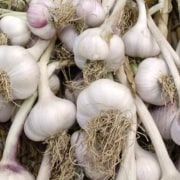
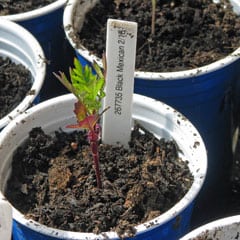
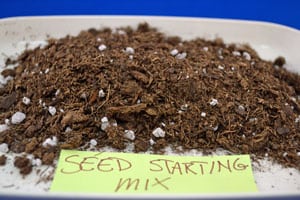
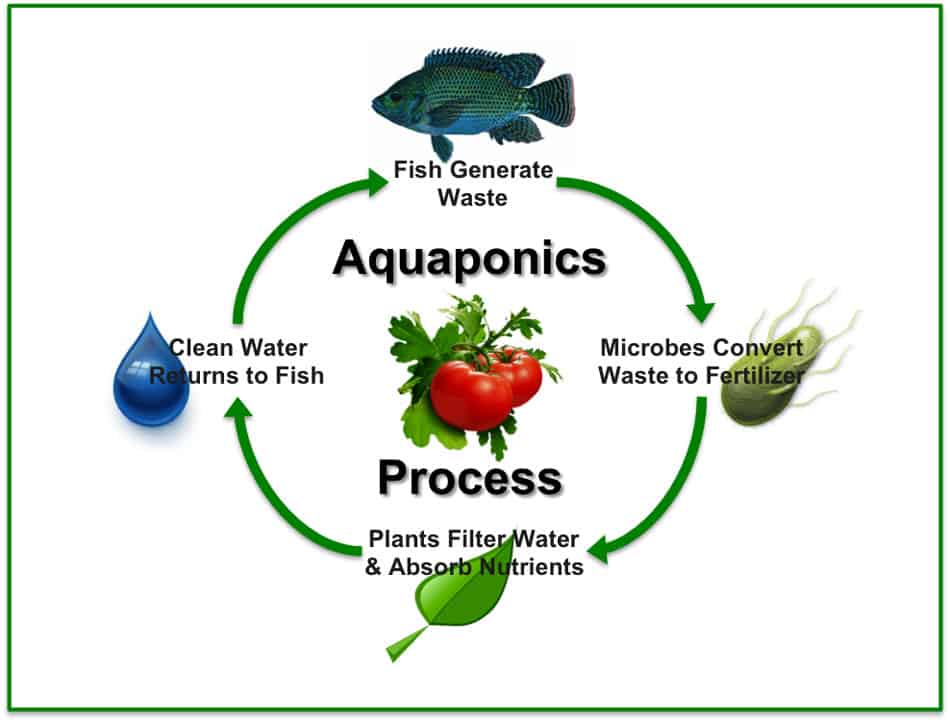
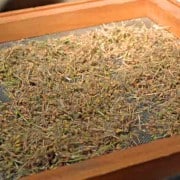



I realize you are in the business of selling seeds, but still… I wish you had simply demolished the whole idea of “emergency seeds.” It is good that you point out the inherent flaws in this idea, and your suggested approach is mostly sound. The problem is that by definition, an “emergency” means it’s too late to start planting seeds.
One does not prepare for an emergency by saving or buying seeds, but by planting them! Only by maintaining a year-round garden can one really be prepared for an emergency of such magnitude as to interrupt the food supply for more than a few days. And even then, water is of far greater importance than food. A garden that is already in production, well watered and well mulched, can provide food for a while even without additional water; but a newly planted garden needs constant moisture before the plants mature.
The water requirements are of such magnitude that storage is effectively impossible, especially for those of us in the Mediterranean climate of the West, where we go months without a drop of rain. A barrel full of rain water will keep a small garden alive for only a short time in the hotter months (and the water in it will quickly become undrinkable in the same season).
A very thoughtful response to a crazy question! I’d rely on our well-stocked pantry, fridge and freezer, but I hadn’t thought of sprouts as an emergency food. Thanks for proving the old adage, you learn something new every day.
Thanks Anna, we had hoped to generate some thought and realization that seeds by themselves are not an emergency food source. Glad we could give you a different angle of thought.
Glad you enjoyed the article Tim! You seem to disagree on the entire concept of “emergency seeds”, or seeds that would be used in an emergency situation, preferring to have an active garden instead. I agree with the active garden concept, and stated as much a few times in the article. The value of emergency seeds really comes into play in situations such as the recent Oklahoma City tornado, a hurricane or tropical storm, a severe hailstorm or any disaster which wipes out the garden as well as the available food supply. Then you don’t have the established garden as a resource and are forced into starting over after the emergency, when you say it is “too late to start planting seeds”. If this situation happens, I presume that you would, indeed, re-plant your seeds after the emergency. The active garden indicates a developed skill-set, which is much more important than just the garden itself. The skill-set will allow for re-planting and adapting to different circumstances, which a beginning gardener cannot do.
The water storage issue you bring up is a good one, and one that needs to be addressed as well. I didn’t mention it in this article to keep it from becoming a book. Adequate water storage is fairly easily addressed with a storage tank for just such events. Here in Arizona, it is not uncommon at all to see many of the houses with 2,500 – 3,500 gallon poly storage tanks that are in usage. There is enough water for a home, garden, chickens and some other animals for a month, if a flush toilet is not used and sensible water practices are observed. The colored poly keeps the water fresh for an extended period of time as well, due to protecting it from the sun’s exposure and the resulting algae build up.
Hi Stephen, yes I actually did enjoy much of the article, despite my disagreement on certain aspects. We certainly both agree on the importance of maintaining a garden; we probably agree that resiliency is only one of the many benefits accruing to the gardener (and her neighbors).
Here on the Mendocino coast those large storage tanks are ubiquitous as well, and I have a 3,000-gallon tank myself. (And, of course, a garden.) In our case it is largely because well yields are generally very low, coupled with the fact that we have no other sources of water. It’s a relatively remote area that could easily become isolated in the (not unlikely) event of a major earthquake; even the occasional severe winter storm can isolate us for a few days by making the roads impassable, as happened only a couple of years ago.
I’m still not seeing the benefit of “emergency seeds” in events like the OK tornadoes. Will the food supply to Moore be disrupted for a month? Of course not. Even severe hurricanes like Sandy didn’t do that (Katrina nearly did, by combining indifference with incompetence…). What kind of emergency would sever the food supply for long enough that food crops planted after the event would make a significant difference to survival?
Perhaps they should be called “Apocalypse Seeds” instead?
I like the answer of “both” and “more” Maybe having a few seed vaults ( that are nitrogen packed and maybe stored in a freezer to extend life further) in addition to an active garden. 2 is 1 and 1 is none. What if your active garden has a failure 2 years in a row and you don’t get enough or any seed to replace it? What if you gain access to some more space (such as a front yard available now that the department of making you sad aka code enforcement doesnt care in a disaster) and need to get it up to production fast. With survival, the answer is usually it depends, or yes and yes.
Tim, I think that we have many more points of agreement than disagreement, and that is great. One of the major reasons for writing this article is to generate discussion and some critical thought, especially about the status quo acceptance of an “emergency seed vault” and its inherent (but assumed) benefits. It sounds like you way are ahead of the curve presented here, with a well-established skill-set and some common-sense preparations as to water and food based on your specific locale.
Two example of emergencies that would severely affect the food distribution system are a regional grid-down, as we have seen a couple of times in the past few years and a price spike or supply disruption of diesel fuel. Either one will drastically affect the ability to transport and store food and conduct business.
I purposely wrote this as to be a bit controversial, so please don’t take offense…
Good thoughts Jake! As you rightly pointed out, there are so many different scenarios to look at, each individual one can and will be different. No two situations will be the same, so rational, thoughtful and intelligent preparation is the key, along with a good amount of knowledge and skill.
Stephen,
Another good article. Everyone should have a disaster plan…..everyone. We are responsible for ourselves and our families under any and all circumstances. We have become a very dependent society, even those of us who consider ourselves independent, or even “off-the-grid” types. We still think everything we want will be within our reach within a reasonable amount of time. It may well be, but I would hate to think that a few dollars of seed stored away was the difference between OK and Not OK, should the unthinkable arise. I found your plan to be far more practical and less hysterical than some of the “survival” sites and I appreciate it. Luckily, I am where I can garden 365 days a year. But I also live in hurricane country. If I lost my garden to a storm, it would be nice to know that I had seed on site that I could get into production right away rather than lose 2 weeks or more waiting for communications and transportation to normalize.
Thanks for your thoughts and comments Angela! It is good to see another perspective in this, a very complex and emotionally involved subject.
There are lots of things to think about in the eventuality of some type of short duration food supply interruption as well as longer term thinking. One thing to think about is in the area of harvesting the local weeds that usually no one thinks about. For instance here in the hot central valley of California there are many so-called ‘”noxious” weeds that are very edible and readily harvestable such as purslane (verdolagas), amaranth of various types, lambs quarters, etc. Also, wise person should plant edible flowering plants in their yards that would not attract much attention, but are edible such nasturtiums, tulips, poppies, strawberries, blueberries, etc. From around the world there are many plants that look good in the landscape and are edible such as New Zealand spinach (available all summer long). It is wise to leave no available space unplanted and one needs to be aware of and search out the community gardening locations – there are more and more of this type space becoming available across the nation and in other countries.
Water is always a problem worldwide and will become more and more of a problem in the future. When I lived in the Sierra Mountains here in California, my well pump motor was a 480′ below the surface. Others in the area found a good supply of water at 30′, depth of a well varies with the big problem being the power source. My brother-in-law in Oregon has about 900 acres of dry land in eastern Oregon and he has several stock wells where the tank is supplied from a well with a solar panel to provide panel and a float switch to keep the tank full. I now live about 500 yards from the Kings River and I know that I have water under me at about 30’. There are resources on the internet an how to sink a well in such a shallow depth without the usage of well drilling equipment and that is what I intend to do if I lose municipal water and/or electricity. Lots of things to think about.
Good thoughts and comments jacksson, thanks! Yes, there are many things to consider in any scenario, the purpose of this article is to get folks thinking past what is at the supermarket and to realize that they have a lot more choice and control over what sometimes seems to be completely out of their control. A little forethought, planning and preparation goes a really long way.